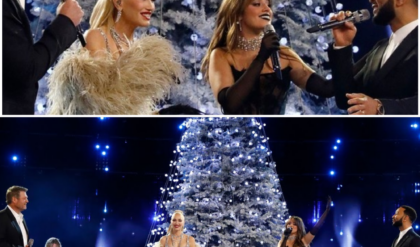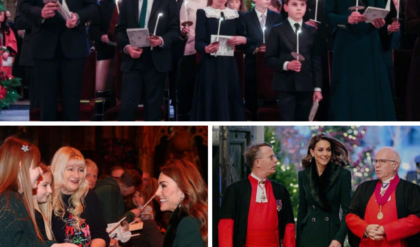Disney’s venture into live-action remakes of its beloved animated classics has been a mixed bag, producing both triumphs and disappointments. While films like Beauty and the Beast (2017) and Aladdin (2019) have been commercial successes, others have stumbled, leaving some Disney princesses with portrayals that failed to capture the magic of their animated counterparts. As of May 14, 2025, the latest addition to this list, Rachel Zegler’s Snow White from the 2025 remake, has sparked debate about its place among the weakest live-action princesses. Drawing from critical reviews, box office performance, and public sentiment, here are the five worst live-action Disney princesses, ranked by their disappointing executions.
5. Ariel (The Little Mermaid, 2023) – Halle Bailey
Halle Bailey’s portrayal of Ariel in Disney’s 2023 live-action The Little Mermaid was a bold casting choice that drew both praise and criticism. Bailey, an African-American actress and singer, brought a fresh voice and youthful energy to the role, earning accolades for her rendition of songs like “Part of Your World.” However, the film struggled to balance its modern updates with the nostalgic charm of the 1989 animated classic. Critics noted that the underwater CGI, while visually impressive, often felt artificial, detracting from Bailey’s performance. The plot adhered closely to the original, with Ariel’s curiosity leading her to trade her voice for legs, but some felt the added depth—such as her interactions with King Triton (Javier Bardem)—lacked emotional resonance.
Commercially, the film grossed over $560 million worldwide, a solid return on its $250 million budget, but it faced significant review bombing on platforms like IMDb, where a third of users gave it one star due to racist backlash over Bailey’s casting. Despite her vocal prowess and charisma, the film’s reliance on CGI and a safe script left Ariel feeling less memorable than her animated predecessor. Some online discussions suggest Bailey deserved a stronger narrative to showcase her talents, placing her at the lower end of this list due to the film’s execution rather than her performance alone.
4. Cinderella (Cinderella, 2015) – Lily James
Lily James’ Cinderella in the 2015 live-action remake was a visually stunning take on the 1950 classic, with James bringing an enchanting innocence to the role. The film, directed by Kenneth Branagh, grossed $542.4 million worldwide against a $95 million budget, a financial success. James aimed to address criticisms of the original’s passive heroine, telling Collider that the remake focused on Cinderella’s courage and kindness rather than waiting for a prince. Her chemistry with Richard Madden’s Prince Charming added a sweet dynamic, and the costume design—highlighted by the iconic blue gown—was widely praised.
However, the film’s adherence to the traditional fairy tale structure was seen as a missed opportunity. Critics argued it played it too safe, lacking the boldness needed to reimagine the story for modern audiences. The stepmother (Cate Blanchett) and stepsisters stole much of the spotlight, leaving Cinderella as a somewhat flat character despite James’ efforts. Online sentiment has described her portrayal as “refreshing but forgettable,” with the film’s lack of innovation contributing to its placement here. While not a failure, it didn’t leave a lasting impression as a standout live-action princess.

3. Aurora (Maleficent, 2014) – Elle Fanning
Elle Fanning’s Aurora in Maleficent (2014) offered a darker twist on the Sleeping Beauty tale, reframing the story around Angelina Jolie’s Maleficent as an antihero. Fanning’s portrayal emphasized Aurora’s curiosity and kindness, breathing life into the character with a gentle performance. The film grossed $758.5 million worldwide, leading to a sequel, Maleficent: Mistress of Evil (2019), which earned $491.7 million. However, Aurora’s role as a secondary character to Maleficent’s narrative arc limited her impact.
Critics noted that Fanning’s performance was solid but underdeveloped, with the focus on Maleficent’s redemption overshadowing Aurora’s journey. The decision to make her a supporting figure rather than the lead, as in the 1959 animated film, left her feeling peripheral. Some online voices have called her “the only live-action princess with two chances but still underwhelming,” reflecting disappointment in the lack of depth. While visually appealing, Aurora’s portrayal ranks here due to its reliance on the stronger Maleficent storyline, making it less memorable as a standalone princess.
2. Mulan (Mulan, 2020) – Liu Yifei
The 2020 live-action Mulan promised an epic reimagining of the 1998 animated classic, with Liu Yifei stepping into the role of the warrior princess. Yifei brought grace and martial arts skill to the character, who disguises herself as a man to take her father’s place in the army. The film’s $200 million budget and stunning visuals were highlights, but it grossed just $69.9 million globally due to its release during the COVID-19 pandemic and a controversial decision to skip theaters for Disney+ Premier Access.
The remake faced backlash over Yifei’s pro-China political views, expressed in 2019 on Weibo, which alienated some Western audiences. Additionally, the absence of Mushu, the animated film’s beloved dragon, and a lack of the original’s warmth and humor left fans disappointed. Critics panned the film for its sanitized story and heavy-handed propaganda, with Yifei’s performance overshadowed by these issues. Online sentiment often labels it a “visual spectacle with no soul,” placing Mulan high on this list due to its critical and commercial failure despite Yifei’s effort.
1. Snow White (Snow White, 2025) – Rachel Zegler
At the top of this unfortunate list is Rachel Zegler’s Snow White from Disney’s 2025 live-action remake, a film that has been dubbed a financial and critical disaster. Released on March 21, 2025, with a $240–270 million budget, the movie grossed just $201.7 million worldwide, marking a significant loss for Disney. Zegler, known for her Golden Globe-winning role in West Side Story, brought vocal talent and charisma to the role, earning praise for songs like “Waiting on a Wish” and her portrayal of an empowered Snow White who dreams of leadership rather than a prince.
However, the film faced insurmountable controversies from the outset. Zegler’s 2022 comments calling the 1937 original “dated” and criticizing the prince as a “stalker” sparked backlash, with some fans accusing her of disrespecting the classic. Her Latina casting also drew racist criticism, despite her fitting the character’s iconic look. The decision to use CGI for the seven dwarfs, replacing live actors after backlash from Peter Dinklage, was widely panned as uncanny and poorly executed. Gal Gadot’s Evil Queen received mixed reviews, and the modernized plot—focusing on empowerment over romance—alienated traditionalists.
Critics gave the film a 47% on Rotten Tomatoes, the lowest rating for a Disney live-action princess movie, with reviews calling it “toe-curlingly terrible” and an “AI-created migraine.” The box office drop of 66% in its second weekend and a mere $6.1 million in its third underscore its failure. Online sentiment ranges from sympathy for Zegler’s talent being “wasted” to accusations that her political views and outspokenness hurt the film. Despite her standout performance, the remake’s flaws—poor CGI, controversial changes, and a lack of nostalgia—make this Snow White the worst live-action Disney princess to date.
The Broader Context of Disney’s Remake Struggles
Disney’s live-action remakes have faced a downward trend in critical reception, with Snow White exemplifying the pitfalls of straying too far from the source material or mishandling fan expectations. The shift toward diversity and empowerment, while commendable, has sometimes clashed with the nostalgia that drives the franchise’s appeal. Films like Beauty and the Beast (71% on Rotten Tomatoes) and The Little Mermaid (67%) maintained higher scores by balancing updates with fidelity, whereas Mulan (72%) and Snow White suffered from bolder reimaginings that didn’t resonate.
Public sentiment online reflects a growing fatigue with remakes, with some arguing for original storytelling over recycling classics. Zegler’s experience highlights the intense scrutiny faced by young actresses, with her talent overshadowed by external controversies. Similarly, Liu Yifei and Halle Bailey faced backlash tied to casting, while Lily James and Elle Fanning struggled with underdeveloped narratives. As Disney continues this trend, the challenge lies in honoring its legacy while adapting to modern values—a balance these five princesses failed to strike.
Conclusion
Ranking the worst live-action Disney princesses reveals the complexities of reimagining iconic characters. Rachel Zegler’s Snow White tops the list due to the film’s critical and commercial collapse, despite her strong performance. Liu Yifei’s Mulan, Elle Fanning’s Aurora, Lily James’ Cinderella, and Halle Bailey’s Ariel follow, each hampered by execution issues ranging from narrative missteps to external controversies. While these actresses brought talent to their roles, the films’ shortcomings have left their portrayals as cautionary tales in Disney’s remake saga. As the studio moves forward, the question remains: can it reclaim the magic, or will more princesses join this unfortunate roster?





